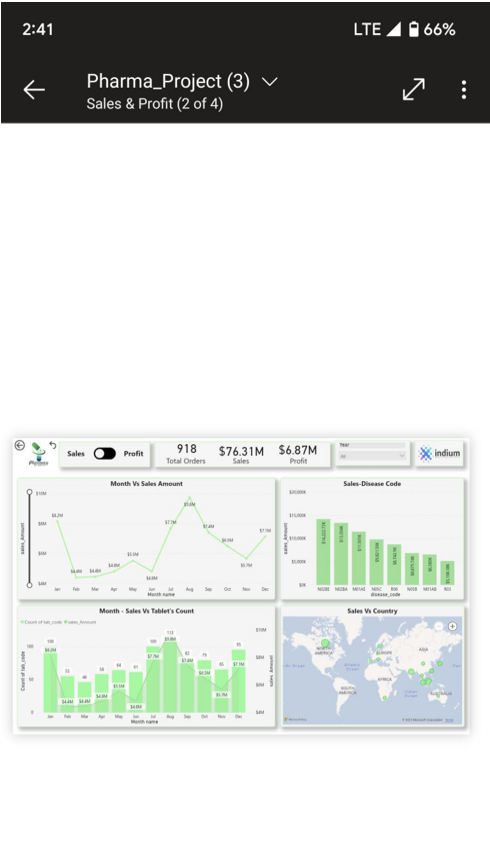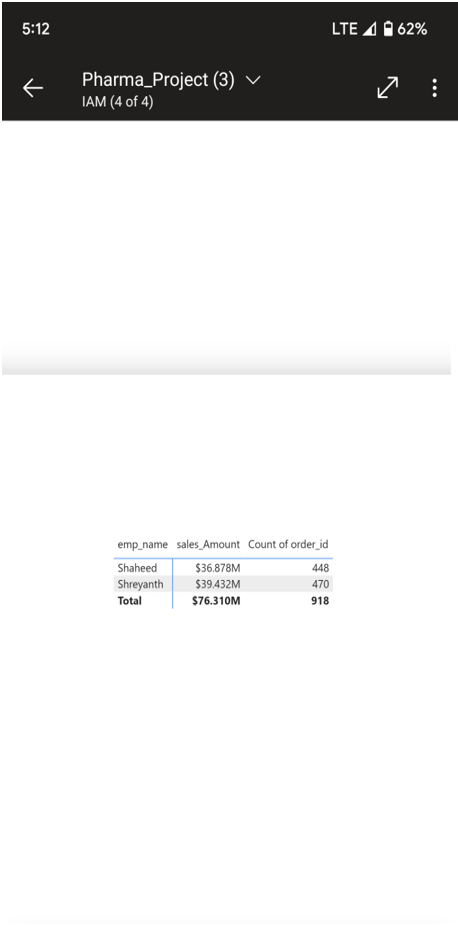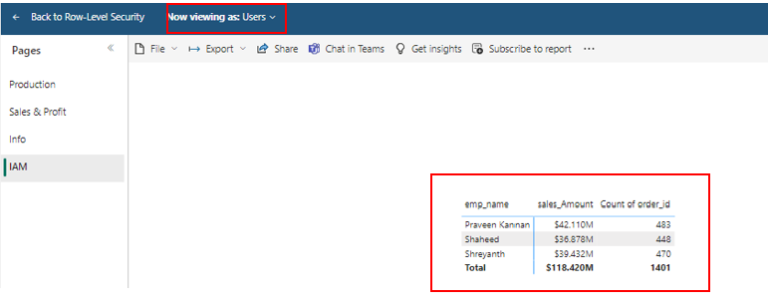Introduction
Power BI has transformed data analytics and reporting by enabling businesses to turn unstructured data into actionable insights. The capacity to produce interactive reports and share them with stakeholders is critical for making data-driven decisions. This article focuses on the publication of Power BI reports, emphasizing the use of QR codes for increased usability and robust data security measures for controlled access to reports. It connects to many data sources, transforms data, and provides aesthetically appealing reports and dashboards with user-friendly features for both technical and non-technical users. Real-time data collaboration and monitoring increase the value of the platform for enterprises of all sizes. The advantages of Power BI report publication include a centralized platform for report delivery, which provides all interested parties with access to up-to-date data. By publishing to the Power BI service, reports can be accessed at any time and from any location via web browsers or mobile devices.
Data security is a significant factor for firms that handle sensitive information. Power BI has strong security features that let you to manage access to reports, dashboards, and datasets. This ensures that only authorized individuals have access to sensitive information, hence safeguarding data privacy and integrity. Row-level security and data classification allow more control over data access. The post will look at how to integrate QR codes into Power BI reports, as well as examine Power BI’s data security capabilities and best practices for managing report access. Readers will have a thorough understanding of applying data security measures, managing report access, and publishing Power BI reports with QR codes at the conclusion
Leveraging QR Codes for Expanded Report Distribution in Power BI
Power BI QR Codes improve report dissemination by increasing accessibility. Users can scan and retrieve reports via QR codes, reducing the need for manual distribution. This feature allows companies to reach a broader user base, including external stakeholders and partners, thereby improving collaboration and engagement. QR codes provide users with ease and mobility by allowing them to access reports on the move via mobile devices. Power BI enables enterprises to efficiently disseminate reports and open new opportunities in data-driven decision-making by employing QR codes. The best practices are detailed below,
- Clear and Concise QR Codes: Create QR codes that are simple to scan and comprehend. Avoid clogging the code with extraneous information, and make sure it guides users to the desired report or dashboard.
- Strategic Placement: Display QR codes in places where users are likely to come across them, such as physical areas, conference materials, or marketing collateral. To increase interaction, consider including QR codes in presentations, business cards, or promotional materials.
- Mobile Optimization: Because QR codes are frequently scanned with smartphones or tablets, optimize reports and dashboards for mobile devices. Make sure the reports are responsive, easy to use, and give a consistent user experience on mobile platforms.

Similarly, the challenges are detailed below,
- User Familiarity: Although QR codes are becoming increasingly prevalent, some users may still be unsure how to scan them. Along with the QR code, include directions or a brief explanation to help consumers obtain the reports.
- Data Security: Ensure that the reports distributed via QR codes follow data security guidelines. To protect data integrity and privacy, limit access to critical information and apply suitable permissions and user roles inside Power BI.


Comparison to traditional distribution methods are as below,
- Efficiency: QR codes simplify report distribution by eliminating the need for manual sharing or emailing files. Users can save time and effort by scanning the QR code to rapidly access reports.
- Accessibility: QR codes allow consumers to obtain reports on-demand, whenever and wherever they want, using their mobile devices. This ease of access enhances the user experience and ensures that important data is quickly available when required.
- Engagement: QR codes are a dynamic and engaging approach to communicate reports, attracting users’ interest and motivating them to dig deeper into the information offered. This can lead to enhanced stakeholder participation and collaboration
Generating and Linking QR code to Power BI reports
The Power BI reports or dashboards that correlate with the produced QR codes must be connected to them. Through its embedding and sharing features, Power BI offers a simple method for connecting QR codes to particular objects. Users can publish reports, create shareable links, and embed these links in QR codes using the Power BI service. It is crucial to guarantee that the right reports or dashboards are directly linked to the QR codes. Verifying the links’ accuracy a second time is essential to prevent confusion or improper access. Additionally, users will always have access to the most recent versions of the Power BI objects if QR codes are often updated whenever reports or dashboards are changed or replaced. It is advisable to adhere to the following best practices to make use of QR codes in Power BI report publishing as effectively as possible:
- In order to encourage quick access to reports, strategically place QR codes in areas that are visible and easily accessible, such as conference rooms, office spaces, or product packaging.
- Give QR codes labels or instructions that are crystal clear and explain what they are for and what report they go to. This makes the code more meaningful to users and encourages them to scan it.
- Before using them broadly, test them to make sure they are working properly and going to the dashboards or reports we want. This reduces the possibility of outdated information or broken links.
- Track the application and efficiency of QR codes by utilizing analytics and usage metrics. This offers perceptions on user engagement, report popularity, and opportunities for development.
Organizations can successfully include QR code integration in Power BI report publishing by adhering to these best practices, improving accessibility and user experience for report consumers.



Applying Data Security and Access Control for Power BI Reports
Power BI provides strong data security mechanisms such as Row-Level Security (RLS), data classification, and access control. RLS lets enterprises to create row-level security restrictions, guaranteeing that users can only access data that they are permitted to see. This is especially useful for sensitive or secret data that must be restricted based on user roles or specified attributes. Organizations can use Power BI to deploy RLS by creating security roles and assigning them to individuals or groups. The Power BI model’s dynamic filtering rules allow data to be filtered based on each user’s designated role or traits, ensuring data access is confined to the proper personnel.

Data classification in Power BI allows businesses to categorize datasets and reports with varying degrees of sensitivity, giving them greater control over access and sharing capabilities. Security groups serve as containers for grouping people with comparable access limitations, making it easier to apply security roles and access controls. Power BI enables enterprises to design many roles, such as viewers, contributors, and administrators, each with its own set of access privileges and capabilities. Individual users or security groups can be allocated these roles, providing granular control over access roles and permissions.

Organizations can directly assign responsibilities and rights to specific team members using Power BI, ensuring that only authorized individuals or teams have access to dashboards or reports that contain sensitive or restricted data. This protects data while encouraging collaboration and data-driven decision-making based on particular criteria. Organizations may implement strong security controls, protect sensitive information, and ensure that data access is allowed to the appropriate persons or groups by leveraging Power BI’s data security features. This improves data confidentiality, encourages cooperation, and allows for informed decision-making while ensuring data integrity and compliance.
Best Practices and advantages of QR report publishing over other methods
The use of QR codes in Power BI report publishing has many benefits and provides a simple and effective method for sharing and accessing reports. It is crucial to create reports with the end user in mind when disseminating them using QR codes. Improve the navigation, visualizations, and layout to provide a simple and effective user experience. To inform users on how to engage with the report, use titles, labels, and directions that are obvious. To make sure the reports are understandable and accessible, take into account the display size and orientation of the device consumers will be scanning the QR codes with.
The data models, queries, and visualizations must all be optimized for the best performance of published reports. To reduce load times and increase responsiveness, use caching techniques and data refresh schedules. Utilize query folding strategies and apply filters to reduce the volume of data retrieved, resulting in effective data retrieval and visual presentation. Numerous platforms, including websites, intranets, mobile applications, and even physical materials like posters and brochures, can be used to disseminate and display QR codes. Utilize the best platform based on the target audience’s preferences for accessibility. Organizations can enhance report visibility and reach a larger audience by offering a variety of channels for report sharing.
Reports that use QR codes have a number of benefits over those that use more conventional platforms. They offer users a quick and seamless access experience, to start. Saving time and effort, scanning a QR code replaces the need for manual searching or navigating through difficult directories or URLs. Additionally, users can get reports on the move without relying on specialized devices or software by scanning QR codes displayed in public spaces. This method is affordable, corresponds with environmental objectives, and improves operational effectiveness.
Conclusion
The QR code functionality in Power BI for report publication makes it easier to access reports and improves the user experience. The incorporation of QR codes into Power BI reports increases exposure and accessibility. Row-Level Security, data classification, and access control are all data security measures that keep sensitive data safe. Organizations should focus on generating user-friendly reports, increasing performance, and employing diverse channels for widespread report communication to enhance Power BI utilization. Power BI is projected to give greater insights and automated data analysis as artificial intelligence and machine learning improve. Power BI will continue to focus mobile optimization, making reports and dashboards mobile-friendly. Real-time teamwork and data-driven decision-making will be possible thanks to collaboration tools. Data privacy and compliance issues will be addressed by enhanced security features and governance controls. To summarize, Power BI enables businesses to acquire relevant insights, communicate productively, and maintain data security. Its ongoing development will allow for even more impactful and secure data-driven decision-making
Co-Authors

Srinithi P
I am a proficient data analyst with experience utilizing tools like Power BI and SQL to extract valuable insights from various datasets. Armed with strong analytical skills, I interpret data trends to provide actionable insights, facilitating informed decisions. Through effective communication and collaboration, I drive projects forward, ensuring alignment with organizational goals and delivering valuable solutions.

Shaheed Mushreef S
I am specialized in Building ETL and Data Visualizations In DOMO and Power Bi. Proficient in Data Transformation Using SQL and Python, Azure Adf, Synapse Analytics and Databricks. My expertise lies in conveying complex information in a clear, understandable manner, empowering stakeholders to grasp insights quickly. My goal is to transform complex datasets into clear, concise visuals that unlock valuable insights for businesses.

Shreyanth S
Shreyanth S is a dynamic and passionate Data Engineer with a successful track record spanning 4 years. Holding an MTech Degree in Data Science and Engineering from BITS Pilani, he has honed his expertise in harnessing data for actionable insights, statistical methods, machine learning and predictive modelling. With a year of experience as a Product Architect in his repertoire, Shreyanth brings a unique blend of technical prowess and strategic vision to the table.
Author
-

I am a proficient data analyst with a deep understanding of statistical methods and data manipulation techniques. With a keen eye for detail, I excel in extracting meaningful insights from complex datasets, utilizing tools like Power BI, Python, and SQL. With a strong analytical mindset, I am passionate about transforming complex data into understandable narratives, enabling businesses to uncover trends and make informed choices.
View all posts

